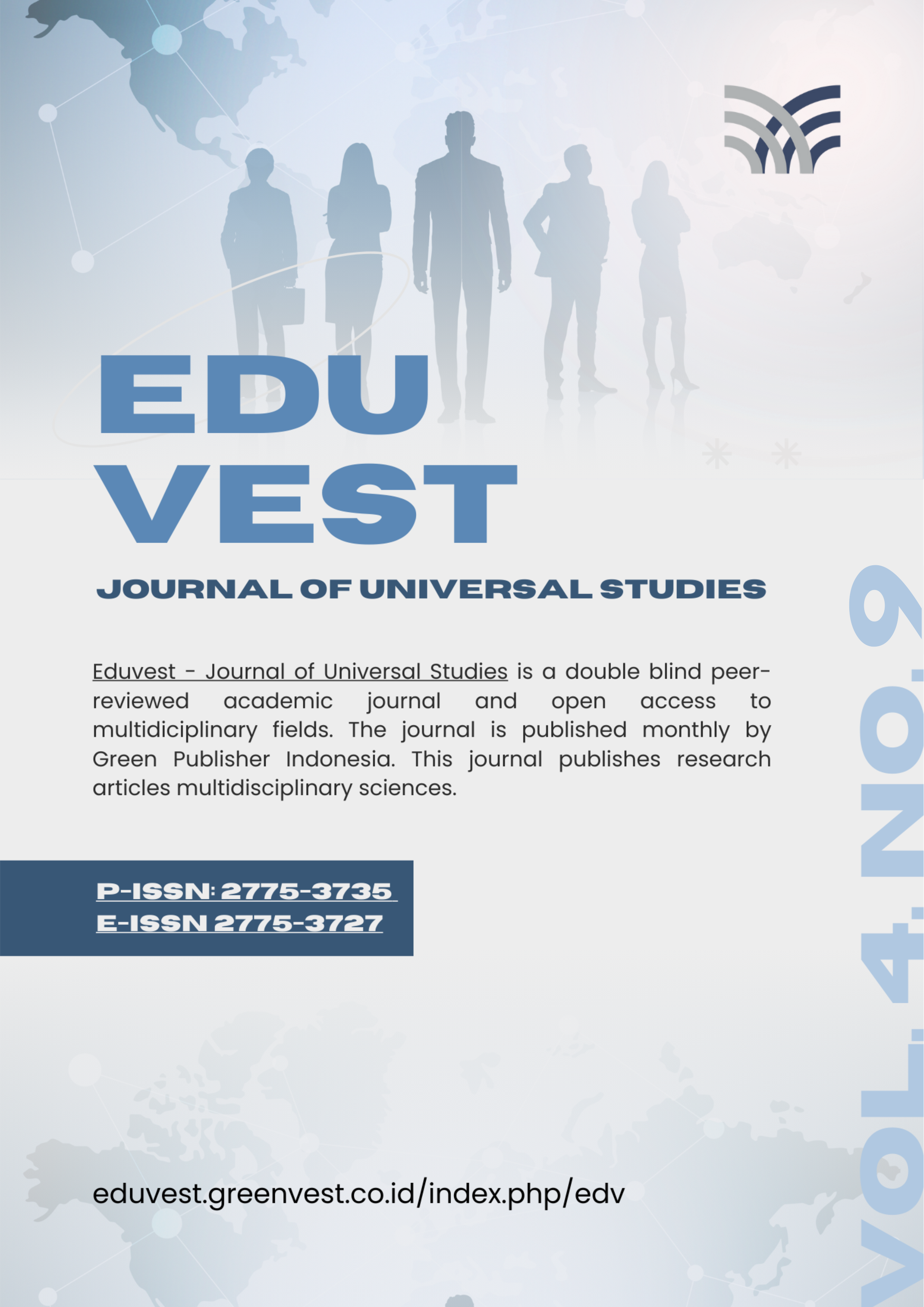Comparative Analysis Of Investment Return Calculations Between Single Index Model (SIM), Capital Asset Pricing Model (CAPM), And Arbitrage Pricing Theory (APT) In 8 Mining Company Sectors
##semicolon##
https://doi.org/10.59188/eduvest.v4i8.1799##semicolon##
Single Index Model##common.commaListSeparator## Capital Asset Pricing Model##common.commaListSeparator## Arbitrage Pricing Theory##common.commaListSeparator## investment return rate##common.commaListSeparator## mining company sectorsAbstrakt
This study aims to analyze the comparative calculation of investment return rates between three models, namely Single Index Model (SIM), Capital Asset Pricing Model (CAPM), and Arbitrage Pricing Theory (APT), in eight mining company sectors listed on the Indonesia Stock Exchange (IDX 30). This study uses historical data from the mining company sectors to calculate and compare the investment return rates based on these three models. The research method used is statistical analysis to evaluate and compare the predicted investment return rates from the Single Index Model (SIM), Capital Asset Pricing Model (CAPM), and Arbitrage Pricing Theory (APT). The data used includes historical stock prices, company financial data, and relevant market data. The results of this study are expected to provide a better understanding of the effectiveness and advantages of each model in the context of mining companies listed on IDX 30. The results of this study show that the Single Index Model (SIM) indicates a moderate financial potential with an average value of 7,58, which is lower compared to CAPM. A high risk (beta) of 2,20 indicates that this investment has a higher risk than the market. On the other hand, the Capital Asset Pricing Model (CAPM) has a higher average return value of 19,15, indicating greater profit potential but also commensurate risk. The Arbitrage Pricing Theory calculation of 6,46, the lowest, reflects a more cautious calculation of return estimates. The inflation beta risk value of 100.924,50 and the deposit interest beta risk of 9.320,14 are very high.
##submission.citations##
Andita, D. H. N. dan Q. (2019). Analisis Perbandingan Perhitungan Tingkat hasil Investasi antara Single Index Model, Capital Asset Pricing Model dan Arbitrage Pricing Theori Pada 17 emiten LQ30 dan 2 emiten non LQ30 Periode 2017. Academia.edu.
Astuti, R., Kartawinata, B. R., Nurhayati, E., Tuhuteru, J., Mulatsih, L. S., Muliyani, A., Siska, A. J., Erziaty, R., Wicaksono, G., & Nurmatias, N. (2022). Manajemen keuangan perusahaan.
Aunillah, M. W., & Wahyudi, W. (2022). Analisis Portofolio Optimal CAPM dan Single Index Model pada Perusahaan IDX30. Jurnal Ilmiah Ekonomi Islam, 8(2), 2231–2240.
Black, K. (2019). Mean Absolute Deviation (MAD) – Meaning & Formula. Subject Matter Expert.
Brealey, R. A., Myers, S. C., & Allen, F. (2014). Principles of corporate finance. McGraw-hill.
Dayan Hakim, N. S., & Sudaryo, Y. (2022). Manajemen Investasi dan Teori Portofolio. Penerbit Andi.
Field, A. (2013). Discovering statistics using IBM SPSS statistics. sage.
Francis Hutabarat, M. B. A. (2021). Analisis kinerja keuangan perusahaan. Desanta Publisher.
Ghozali, I. (2020). 25 Grand Theory. Yoga Pratama.
Nadia Inka aulia, I. S. A. (2022). Menggunakan Metode Capital Asset Pricing Model (CAPMI dan Reward to Variability Ratio (RVAR). Jurnal Sains dan Seni ITS Vol. 11, No.06.
Robbins, S. (n.d.). P. dan Mary Coulter.(2015) Manajemen. Jakarta: PT. Indeks Kelompok Gramedia. Jakarta.
Subramanyam, K. R. (2014). Financial statement analysis. McGraw-Hill.
Sugiyono. (2019). Metode Penelitian Kuantitatif Kualitatif dan R&D. Alfabeta.
Sugiyono, D. (2018). Metode penelitian kuatintatif, kualitatif dan R & D/Sugiyono. Bandung: Alfabeta, 15(2010).
Sumarga, C. C., Herwindiati, D. E., & Hendryli, J. (2023). Rancangan Sistem Prediksi Harga Saham dengan Menggunakan Metode LSTM dan ARMA klasik. Jurnal Ilmu Komputer Dan Sistem Informasi, 11(1).
Sumber Lainnya:
##submission.downloads##
Publikované
##submission.howToCite##
Číslo
Sekcia
##submission.license##
##submission.copyrightStatement##
##submission.license.cc.by-sa4.footer##










